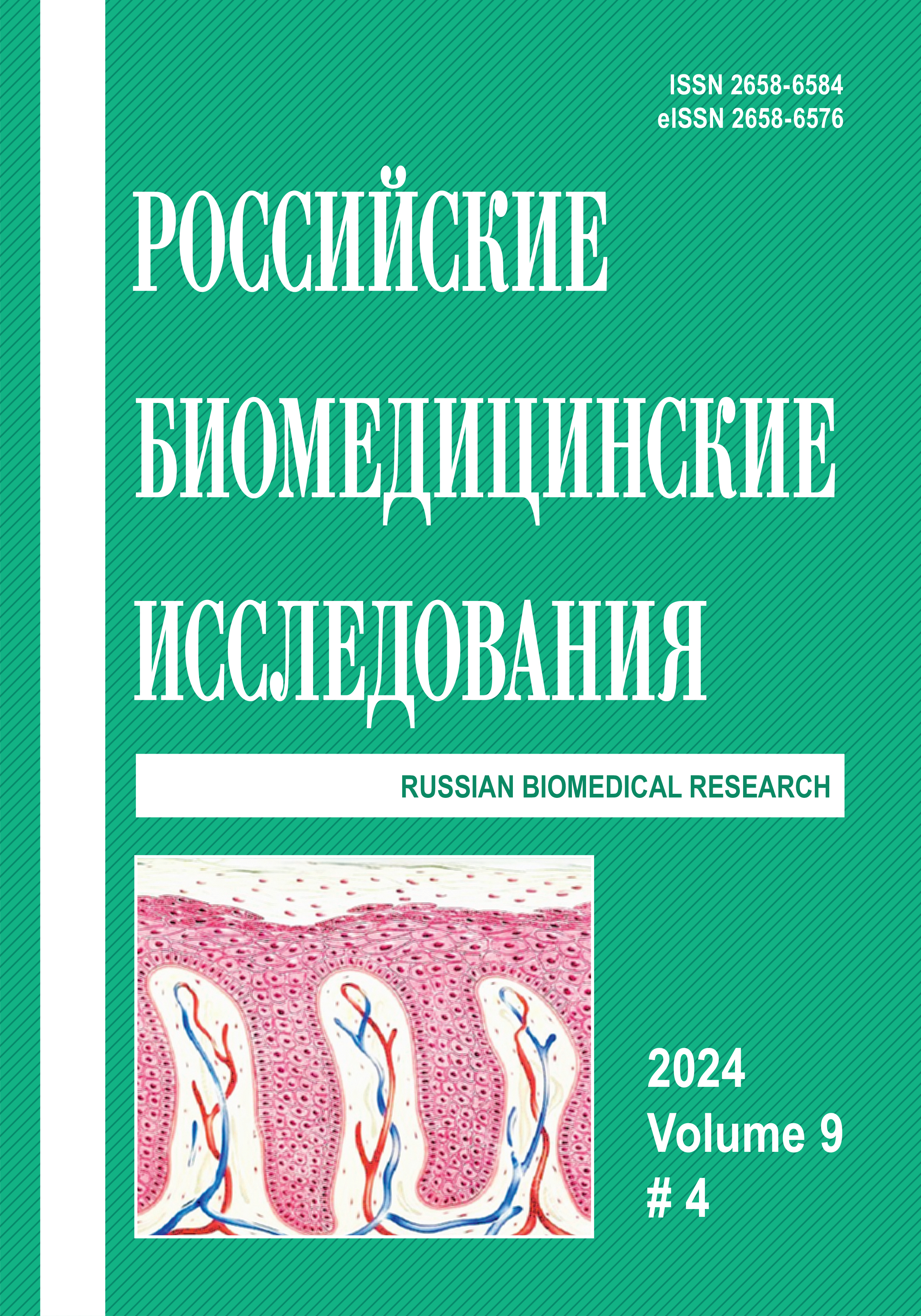IMPROVING THE EFFECTIVENESS OF PHYSIOLOGICAL ADAPTATION OF PATIENTS TO COMPLETE REMOVABLE DENTURES USING ELECTROMYOGRAPHIC BIOFEEDBACK
Abstract
Introduction. Complete absence of teeth is a very common pathology, especially in the elderly, and removable dentures are mainly used for its treatment. Various local and general mechanisms are used to reduce the process of adaptation to dentures in patients with complete absence of teeth. We suggest using the principle of biofeedback, which is safe, does not require medical support, and optimizes the adaptation process by activating the human body’s own reserves, through active patient involvement and conscious training of the musculoskeletal system. The aim of the study is to optimize the adaptation process of primary prosthetic patients with complete removable plate prostheses using the principle of biofeedback. Materials and methods. The research was aimed at substantiating the effectiveness of the biofeedback method to optimize the adaptation of patients to removable dentures after complete tooth loss. The study involved 50 elderly people (60-74 years old). All patients were treated for complete absence of teeth with removable dentures, but the patients of the main group received biofeedback therapy at the treatment stages to optimize adaptation. Results. When comparing the results of the group receiving traditional treatment and the group using correction with biofeedback, it was found that the adaptation to full removable plate prostheses occurred faster in the second group. According to electromyography and gnathodynamometry data, patients receiving biofeedback therapy at the treatment stages had already adapted to full removable plate prostheses on day 14. We have proved the effectiveness of the implementation of the proposed technology to optimize the process of adaptation to removable dentures. Conclusion. Based on the results of objective physiological and subjective studies, it can be seen that the use of the author’s algorithm based on the principles of biofeedback makes it possible to shorten the period of adaptation of patients to complete removable plate prostheses, thereby optimizing the process of getting used to complete removable orthopedic structures.
References
Иорданишвили А.К., Веретенко Е.А., Сериков А.А., Лобейко В.В., Балин Д.В. Полная утрата зубов у взрослого человека: возрастные особенности распространенности, нуждаемости в лечении и клинической картины. Курский научно-практический вестник Человек и его здоровье. 2015;1:23–32.
Бибарсова М.И., Коннов В.В. Истечение периода адаптации к полным съемным пластиночным протезам — повод к началу замедления атрофии челюстей. Материалы XXXIX Международной научно-практической конференции. М.; 2018: 218–219.
Joanna K., Teresa S., Maria G.J. Evaluation of functional parameters in the occlusion of complete denturewearers before and after prosthetic treatment. Prosthodont Res. 2017;61(4):480–490.
Самарина Я.П. Вторичная адентия зубов: последствия и способы лечения. Научное обозрение. Медицинские науки. 2017;3:71–74. Доступно по: https://science-medicine.ru/ru/article/view?id=1000 (дата обращения: 14.03.2022).
Мальнева К.Е., Ячменева Л.А. Адаптация к съемным пластиночным протезам при полной адентии. В сборнике: Современные проблемы науки и образования. Материалы XI Международной студенческой научной конференции. 2019:59–60.
Kamalakidis S.N., Anastassiadou V., Sofou A., Pissiotis A.L. Comparative Study of Acceptance and Adaptation to New Complete Dentures, Using Two Construction Protocols. J Prosthodont. 2016;25(7):536–543.
Киприн Д.В., Самотёсов П.А., Ибрагимов Т.И., Бондарь С.А., Юрьев В.А. Изготовление пластмассового пластиночного зубного протеза для восстановления адентии челюстей. Сибирское медицинское обозрение. 2012;4(76):30–32.
Meriem Amine et al. Needs and Demands in Prosthetic Treatment in the Population Followed within the Prosthetic Department of Casablanca’s Dental Consultation and Treatment Center. Int J Dentistry Oral Sci. 2016;3(2):200–204.
Suzuki H., Kanazawa M., Komagamine Y. et al. Influence of simplified dietary advice combined with new complete denturefabrication on masticatory function of complete denture wearers. J Oral Rehabil. 2019;46(12):1100–1106.
Woda A., Foster K., Mishellany A., Peyron M.A. et al. Adaptation of healthy mastication to factors pertaining to the individual or to the food. Physiol Behav. 2006;89(1):28–35.
Giggins O.M. Persson U.M., Caulfield B.J. Biofeedback in rehabilitation. Neuroeng Rehabil. 2013;10:60.
Прищепа А.В., Данилов А.Б. Эффективность метода биологической обратной связи в лечении хронической головной боли напряжения и хронической мигрени. Медицинский алфавит. 2018;2(17):19–25.
Cheynet F. TMJ, eating and breathing. Rev Stomatol Chir Maxillofac Chir Orale. 2016;117(4):199–206.
Шемонаев В.И., Машков А.В., Малолеткова А.А., Клаучек С.В. Роль гнатотренинга в адаптации пациентов к стоматологическому ортопедическому лечению. Волгоградский научно-медицинский журнал. 2014;1(41):53–55.
Чепуряева О.С., Клаучек С.В., Шемонаев В.И., Данилина Т.Ф., Михальченко Д.В., Шкарин В.В. Пластмассовый базис с пластмассовым валиком на нижнюю челюсть. Патент на полезную модель RU 202617 U1, 01.03.2021 г. Заявка № 2020117312/14(028971).
Чепуряева О.С., Клаучек С.В., Шемонаев В.И., Данилина Т.Ф., Михальченко Д.В., Шкарин В.В. Пластмассовый валик с пластмассовым базисом на верхнюю челюсть. Патент на полезную модель RU 213341 U1, 07.09.2022 г. Заявка № 2021130950.
Чепуряева О.С., Клаучек С.В., Шемонаев В.И., Поздняков А.М. Комплекс миогимнастических упражнений для тренировки и нормализации работы жевательных мышц пациентов с полным отсутствием зубов. Патент на изобретение RU 2812832 C1, 02.02.2024 г. Заявка от 22.03.2023.
Чепуряева О.С. Способ тренировки жевательных мышц пациентов с полным отсутствием зубов с использованием принципов биологической обратной связи. Патент на изобретение RU 2811761 C1, 16.01.2024 г. Заявка от 02.06.2023.
Copyright (c) 2024 Russian Biomedical Research

This work is licensed under a Creative Commons Attribution 4.0 International License.



